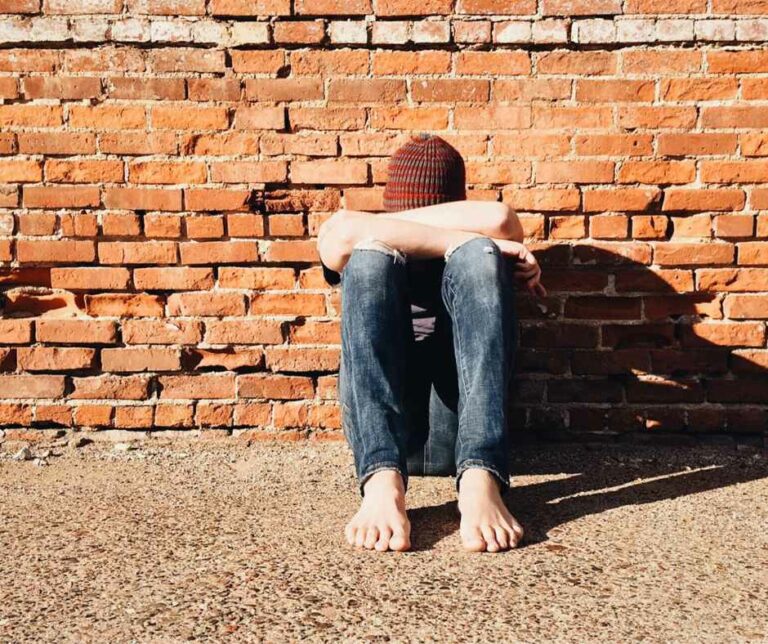Levels of porn use: a complex conversation
When it comes to pornography, a lot of people tend think in black and white terms. Consider the following black and white ways to think about pornography that are very common:
- Porn is addictive or not
- Porn is good for a couple’s sex life or bad
- Porn increases sexual violence or it has no effect on violence
- Porn is healthy or unhealthy
Research has consistently suggested that pornography viewing has generally negative effects on individuals, couples, and youth. Yet how, why, and when these negative effects occur is complicated.
Consider just a few of these nuances. Research has generally shown that pornography has a more negative effect on men than women. Research has also shown that pornography use involving both romantic partners together can still destabilize a relationship, but has a more complex effect on relationship outcomes than some realize.
Attitudes and moral beliefs about pornography can also complicate the effect that pornography has on individuals and couples. Those with strong religious beliefs are more likely to think they have problems with porn than those who are not religious.
With all these complexities, it is important to carefully consider how viewing porn influences individual behavior, personal well-being, and relationships. Understanding even a little of this complexity helps you to understand how pornography may be influencing your life. Also, you’ll be enabled to help friends and family members around you who may be struggling with

Defining the porn continuum
One of the most important aspects of pornography to understand is what we will call the pornography continuum. This refers to the fact that the amount of pornography viewed tends to impact the effect it can have.
Generally, researchers have identified four levels of pornography use that are common. Understanding these four levels can help you understand how porn affects people you love and help you better understand the resources they may need.
Briefly, here is what each level of porn use means:
Level 1: no (intentional) porn use
This level does not necessarily mean someone has never seen or viewed porn. Most people have been exposed to pornography at some point in their life or even experimented with watching a few explicit videos. However, this level refers to people who have no regular pattern of use. They rarely, if ever, view pornography intentionally.
Level 2: random level of porn use
This refers to porn use that is repeated but often at low frequency and without a clear pattern. This often looks like a person who may view pornography a few times a year or even a few times a month, but the pattern is random and does not tend to be consistent. This is the most common type of pornography use pattern.
Level 3: problematic level of porn use
This is the first level of porn use that many professionals and experts have noted begins to cause serious harm and problems in a person’s life. Notably, problematic use is consistent pornography use (often weekly) frequently accompanied by a level of personal distress and difficulty stopping.
Level 4: compulsive level of porn use
This type of porn use is often referred to as addiction. It’s easily identified by high frequency porn use (daily or almost every day) that starts to influence a person’s ability to function at work, at home, and in romantic relationships. While rare, this type of porn use can have very damaging effects on all aspects of a person’s life.

Understanding the levels of porn use
Now that you’ve seen an overview of porn use on the continuum, let’s explore three of these levels in more depth. We will focus on the main three levels of porn use and not discuss the No Use category (this being the category we’d love to see everyone in!).
The hope is that by bettering your understanding of each level and the resources needed, you will be better equipped to lend a helping hand to those around you who may be struggling with porn. You can also protect yourself from the harms of pornography use.
Random levels of porn use
Why It Matters
Many people think that porn use is totally harmless. In fact, a survey of adults in the US found that around 70% of adults have generally positive attitudes about porn. So why is it such a big deal to look at it here and there? The fact is porn is so problematic that even inconsistent use can negatively impact people on many levels.
Consider some of these realities. Any level of porn use can chip away at body image, which makes sense: the unrealistic bodies and relationships in porn make many adults feel inferior in themselves and their relationships.
Speaking of relationships, porn leads to lower relationship satisfaction and a higher likelihood of getting a divorce, because the acts and relationships shown in porn make men and women more likely to be disappointed with real-life sex and intimacy. It can also make monogamous relationships less satisfying due to the high prevalence of casual sex with multiple partners in porn. And finally, even mainstream porn viewed at any frequency can make men more likely to objectify women and expect women to do things they see in porn (that are not pleasurable to them)!
How do you know if you’re here versus in the “no use” category? The main factor for putting people in this category is inconsistency. Many people will go a few weeks or even months without using porn and then go on a “bender,” so to speak, looking at a ton of porn in a short amount of time—and then stop for a while again. Or it could be infrequent levels of porn use that’s once or twice a week for two months, and then only a couple times or not at all the next month.
For others, there might be a clearer pattern of a few times per month but scattered throughout the month in an inconsistent way. However, what these patterns all have in common is that there is a regular level of porn use if you zoom out and look at the use overall, say spread out over a year. Most people fall into this category, and it’s very tempting to say that you are in a “no use” category if you inconsistently use porn. But the truth is, you use porn enough for it to affect you.
Resources that can help with random levels of porn use:
A) Learn about the harms of porn
The best thing you can start doing is educating yourself more about how harmful and damaging porn really is. Not just in ways we touched on above – harms to mental health, relationships, and impacts on sexism – but also the devastating, but little-known effects the porn industry has on society.
Porn is a powerful money making industry that is largely unregulated. And when it comes to bodies and sex, that should make you very concerned from a human rights and welfare perspective. It is very hard to reach and study porn actors, but what we know from interviews and some recent exposure in the New York Times is that it is almost impossible to verify whether the people in porn are consenting adults.
Even if there is a “consent” moment attached to a clip, there’s a concerning likelihood that it was forced out of a young, scared, economically disadvantaged woman or girl who did not consent to what you just watched.
And because of how much money can be made from exploitation and filmed sexual assault, it is common for real-life rape and incest to be uploaded to popular porn sites and shared and liked by millions—and kept there even if the victim pleads with the site to take it down. We have a long way to go in regulating porn to ensure safety for actors. Meanwhile, the best thing you can do is to not fuel demand by avoiding looking at porn.
B) Identify your triggers and set up boundaries with yourself
The next thing you can do is to learn about what triggers your porn use, so you can start being smarter about avoiding it. We have a great document for light porn users outlining the 5 steps to avoid porn use . We will give you a primer here, but be sure to look at that document for more details.
The first step is to identify the sources you use to look at porn, whether that’s on your tablet, phone, computer; in your car, the bathroom, or your bedroom. Next, you will identify your triggers. What typically happens before you use porn? Contrary to popular opinion, porn is rarely about a lack of sexual activity, and far more about escaping reality.
Most of the time, people who use porn are doing it to escape uncomfortable emotions or an overwhelming emotional state. Commonly they’re escaping shame, boredom, insecurity, stress, anxiety, or the aftermath of a conflict with a spouse or supervisor. Think about your triggers as a first step to avoid slipping into porn when you’re triggered in the future.
Once you know your triggers, it’s time to set up boundaries. Boundaries can be physical, mental, or emotional. Physical boundaries against porn are things like “no devices in bed or at night,” or “no media use that has any potentially triggering sexual content.”
A mental boundary is a “check” you set up for yourself mentally that can help you remember your values or steer you away from porn when triggered. For example, try reading a mantra, scripture, or looking at a picture of a loved one when triggered. Even having a daily reminder go off on your phone can help you at the cognitive level.
Finally, emotional boundaries help you avoid emotional triggers. For example, if you typically use porn after a stressful day at work, set up a boundary with yourself that you will not be alone with any devices after work. Or, decide that you will instead journal or go on a brisk walk without your phone when you get home.
C) Open communication with friends and family members
Finally, talk about your random level of porn use with people you trust. Particularly for people in a romantic relationship, switching from “I’ll do it myself” thinking to a “shared recovery process” is vital.
Starting to share all emotions surrounding porn is one of the key factors that helps couples get past porn together. By sharing with someone both ahead of time, and during times when you are triggered, you can finally start to get support. After all, perhaps what you most need is to talk about the stressor that’s triggering you, so you can come up with a plan together to avoid turning to porn.

Problematic levels of porn use
Why It Matters
If inconsistent levels of porn use cause so many issues, it should be no surprise that problematic use has even more serious consequences. However, even this group is likely to see no problem on the surface with using porn, especially those who are not religious.
The reality is, you can just add onto the consequences we listed above for random users. Like we mentioned in the previous group, porn viewing can lead to problems in relationships and with gender relations. These struggles only get worse with more frequent levels of porn use. Plenty of evidence shows that problematic levels of porn use lead directly to increased violence against women, for example.
The sexual scripts of porn, when viewed more frequently, expose you to even more of the lies that porn tells people about how relationships and intimacy should look.
Somewhere between 37 and 88% of porn depicts violence against women. This means you are even more exposed to ideas about how women should be subservient to men. Or that men should be aggressive and disregard consent. You’re even more exposed to the lack of safer sex practices that porn depicts. You’re even more likely to be dissatisfied with a committed, monogamous relationship. These can all lead to a further decrease in sexual satisfaction due to such a high rate of exposure to the type of “wild,” rough sex depicted in porn.
What gets far worse is the impacts that porn has on your life. With a consistent level of porn use, you start to see damage to your loss of willpower and ability to control how much you are using it. This can quickly escalate down a path towards addiction, and then you’re really in trouble.
Even before addiction, which we’ll talk more about in the next section, you can start to crave the release you get from porn, because the feel-good chemicals that your body produces give you a temporary relief from discomfort in your life.
This leaves you increasingly likely to prefer porn over real life, leading to an overall decrease in sexual and relationship satisfaction. It even creates the beginnings of some problems like neglecting your health and wellness.
Ultimately, you’re at an even higher risk of those impacts on mental health and self-image we mentioned before. And doesn’t it make sense? Porn is a fantasy—it’s not a reflection of real life. The bodies you mostly see are not like regular bodies, and this can leave a lot of people, both men and women, very likely to feel bad about themselves if they’re viewing porn regularly.
Porn can exacerbate depression because of the increased loneliness and shame. With increased levels of porn use, you are even more likely to think that your life, relationships, and body are somehow flawed.
Finally, porn might make people feel better temporarily and avoid their problems for a brief time. However, during pauses between porn use, they look around and see that their problems have not gone away. In fact, problems have often escalated due to neglecting them in favor of porn.
Resources that can help with problematic levels of porn use
Draw on personal resources.
The first thing you or anyone needs when starting out on a recovery journey is support. It is very difficult to recover from any habitual problem without a helping hand or at least someone to open up to. Remember that you are human—your desire to look at porn is natural.
The problem is not with innate human curiosity about things like nudity and sex. The problem is that porn is no longer the occasional pinup or adult mag hidden in the attic like it was in Grandpa’s time.
In a short amount of time, just over a decade, porn has escalated to a situation that allows people to view unlimited amounts of a very unnatural type of sex and bodies. Porn is not natural, it is everywhere, and is far too easy to access anonymously.
So rather than piling on the shame to your very human tendency, start to tamper down this shame by connecting with others over it. You might be surprised at just how many people in your life are also affected and wish they could get away from it. However, even if you don’t find camaraderie, just finding a nonjudgmental and caring space is important in starting to end the cycle of shame, porn, shame, porn….rinse and repeat.
Limit your access
Another important step in starting to recover from problematic levels of porn use is to keep yourself from accessing it as much as you can. As you are most likely using porn to escape or try to deal with difficult emotions or situations, you need to start reintroducing or discovering healthy alternatives.
While working on this, you should try to limit the availability of porn in your life so that it is harder to access in those moments when you need an outlet. Ever Accountable has filtering software that comes free with any accountability package.
Keep in mind that filters won’t catch everything, and they don’t do anything to help you with underlying problems that lead you to porn. This is why we strongly recommend accountability.
Like we said before, support is vital, as is exposure, to start breaking up the secrecy and anonymity that exacerbates porn use to an extreme for a lot of people. Having someone you trust to look at your online activity and talk to whenever you stray to a porn site—even one that a filter doesn’t block—will help you get into the habit of turning to another human being instead of porn. In turn, accountability helps to prompt healthy conversations about what triggered you and what to do about underlying problems.
Professional support
Some people may need even more support in addition to a friend, family member, or accountability partner. It makes sense, right? Once you start to get into problematic porn use, those uncomfortable emotions and memories you’re using porn to avoid aren’t going anywhere.
Often, you need to learn a healthier way to deal with your emotions, or someone to help you process past traumas and losses, while you start to remove pornography from your life. Be sure to look at the resources in the next section for our advice on how to access mental health support so that you can get help dealing with uncomfortable emotions in more productive ways. You can also turn to religious leaders, mentors, and anyone you trust to hold that space for you while you’re working on building up healthier habits.

Compulsive levels of porn use
Why It Matters
Finally, we get to the last group of porn users: compulsive or addicted users. Whether porn is addictive has been the source of some controversy in the scientific community, but here’s where it’s finally settling. Yes, porn has addictive properties, and roughly 10% of users feel like they cannot control how much they use it. Drugs and alcohol are addictive because they introduce a chemical into the brain and body that the addict will start to crave and put their lives on hold to chase.
Porn is similar, but the chemical is released by your own body. Regardless, the effects are similar for this group of people. In fact, it is addictive enough that it porn use been added to the CDC’s list of possible types of Compulsive Sexual Behavior Disorder.
Think about it: if you use porn when you are stressed, bored, or in any emotional distress, porn helps you escape and feel better. If you do this regularly, you can start to think about it all the time and then eventually, you might start to feel like you “need” it to handle difficulties in life.
This craving can easily turn compulsive, where you would rather look at porn than engage in your life, do the hard work towards bettering your relationships, or put in the hours towards a goal. Because you are now using porn all the time, you need it more and more, because it becomes even harder to find that good feeling without it. You might start to get quite anxious without it, even though the release gradually gets harder to find. So, porn can put you in quite the trap.
Just like with other chemical addictions, porn has even been shown to have a physical effect on the structure of the brain. Unlike substance use disorders, the chemical isn’t introduced into the body; rather, the body creates the chemical. However, the effects are very similar. With repeated behavior, the brain starts to adapt, making it much more difficult to quit once this level of compulsion is present.
Also like substance addictions, compulsive porn use has devastating impacts on a person’s health and wellness. Because compulsive porn users both look at porn to avoid having to face difficult things, and because they would rather look at porn than engage in their lives, it is easy to see how things can start to fall apart.
This is why people with addictions, including porn addictions, will start to neglect their health, interests, responsibilities, and relationships. This group of people is therefore at a very high risk of starting to see functional impairments, where people will start to seriously neglect responsibilities, health and even hygiene. Goals become harder to reach, and personal empowerment is hard to come by. In short, compulsive levels of porn can mess people up in similar ways to other addictions.
Resources that Can Help
Professional support is going to be crucial for those with compulsive porn use. When you have come to rely on pornography to escape and manage your stress, boredom, poor self-image, shame, anger, trauma triggers, etc., you can’t just remove porn and expect all your problems to go away.
You must learn to address the underlying emotions that led you to develop a dependence on porn to cope. That’s where mental health counseling or support groups are going to be especially important for a lasting recovery process.
Men and common mental health challenges
Unfortunately, many people are hesitant about utilizing mental health counseling, especially men. There is a dominant view of masculinity that tells men that they should be self-reliant and stoic, and never mention the E-word (you know, emotions). But studies show that men have the highest suicide and substance use disorder rates, both of which point to a hard time knowing how to manage negative emotions.
Men also have higher rates of certain disorders like ADHD and Conduct Disorder, both of which involve impulse control problems. If this surprises you, it shouldn’t. Men get incredibly stressed out, especially by work. Men have far more anxiety about unemployment or work-related issues than women, because traditionally, work is a huge part of a man’s identity.
They also have plenty of mental health problems caused by issues in family, relationships, unresolved childhood traumas, and big life transitions. Bottling up emotions has never worked for anyone. Emotions have to go somewhere. For men, they tend to get explosive (either towards the self or towards others) when they don’t know how to handle them in a healthy way. If you still think, “boys shouldn’t cry,” think again. Men seriously need help with their emotions!
Getting support: endless options for individuals and couples
Support with mental health is key for success in any recovery process, both individually and as a couple. Couples therapy is incredibly helpful for couples where one partner is recovering from porn addiction. However, individual counseling is going to give each person that 1:1 support they need as well.
Therapy can look a lot of different ways. There is animal therapy, group therapy for many different concerns, nature therapy, and classic sit-down mental health counseling. Also, in case you didn’t know, counseling has come a long way from the sterile image you might conjure up in your mind. We would be shocked to find someone who sits there and takes notes while you lie down facing the ceiling.
Regardless, if you don’t like the idea of going to a trained therapist, you might have a pastor, bishop, or other mentor who you think could give you solid advice and hold space for you. If you have a role model like this in your life, consider opening up to them and trying to set up a regular appointment if possible.
Therapists are just people: the relationship matters most
Keep in mind that therapists are people, and the therapeutic relationship is just that: a relationship. Some people have one bad experience and write therapy off forever. But just like with any relationship, you will click with some and will not click with others.
Think of it this way. If you have one bad mechanic who does a terrible job, does that mean every single mechanic on the planet is incompetent? No. There are different experience and natural ability levels, training periods, and specialties within every field.
Therapists also all have unique lenses and approaches to therapy. There are Christian therapists, trauma therapists, marriage and family counselors. Now there are even therapists out there who specialize in helping men with sex and porn addictions. Most offer free consultations, so you can see if you click before seeing them regularly.
Group counseling
Support groups are another great way to get help and learn emotion regulation skills, and they can be even more powerful than 1:1 therapy for some people. If you ever feel like you’re abnormal or not quite a member of the human race (a common feeling for childhood trauma survivors), support groups can help you start to feel a sense of belonging and acceptance, which will start to help you relax about your flaws.
How to find a therapist
When finding a therapist, keep in mind that most take insurance, and many take state insurance (like Medicaid). Here are some resources to get you started:
- If you or someone you know is struggling or in crisis, you can call or text the national suicide prevention crisis line at 988 (dial 1 for veterans) or chat 988lifeline.org
- You can also reach out to the Crisis Text Line or text HOME to 741741
- Find a therapist in your area by typing in your area code on PsychologyToday.com
- Find a local support group the same way on PsychologyToday.com
Free, confidential, 24/7 treatment referrals for substance use disorders here or by calling 1-800-662-HELP (4357)

Levels of porn use: important final note
A final important reminder about levels of porn use in the porn continuum is important to keep in mind. While these four categories we have reviewed are the most common experts see, this doesn’t mean that these patterns are stable. In fact, because pornography has the potential to create compulsive and addictive patterns over time, those who currently find themselves in the random levels of porn use category may find themselves, years later, in the problematic use or the compulsive use category.
Remember that addiction develops gradually. When the behavior (porn use) creates a good feeling in the brain or body, or at least temporarily helps a person forget about their problems, it’s natural to want to seek that out again. However, it becomes increasingly problematic once people start to turn to pornography as a way to cope with and avoid their problems. As soon as you start to notice yourself doing this, the risk is that it can start to feel outside of your control—the most troubling stage of addiction. Get more support as soon as you start to feel your levels of porn use escalating.
Regardless of where you are on the spectrum of pornography viewing, we would be remiss not to remind you of the power of accountability in exposing and interrupting the pattern of shame and anonymity that fosters porn use. Our accountability software is completely unique.
Rather than just blocking porn sites (which we can also do), accountability means that your chosen accountability partner will see all your internet activity. This will prompt the most important part of the healing process: a conversation. After all, no one can do this important work alone.
Works Cited
https://www.tandfonline.com/doi/full/10.1080/00224499.2019.1698003.
https://www.sciencedirect.com/science/article/pii/S0747563221002892?casa_token=mRW1c_FtTs8AAAAA:4_zdrC7ClQ4wtDRigd3z8ZKK1P-LHel3JJU3Y4GPvJ9St79i6b_GQYzi_Z9HCcn_YtjFbrPz7S8.
https://www.tandfonline.com/doi/10.1080/00224499.2018.1541440.
https://www.tandfonline.com/doi/abs/10.1080/00224499.2018.1427204.
https://wheatley.byu.edu/national-couples-and-pornography-survey-2021.
https://journals.sagepub.com/doi/pdf/10.1177/1359105320967085?casa_token=kNlTVNXW5S0AAAAA:PufCZe-7VyVf2u35af6R1WrSzf5tmsSKjnJZvhhHggtH_YadFGwBgZM_o6eSsXgjo4ccK_1yISt1.
https://onlinelibrary.wiley.com/doi/pdf/10.1111/j.1475-6811.2010.01328.x?casa_token=pdF-KIONbCoAAAAA:_EAjM3t8Vn3B377t08oUjjDw2EFi0d8TKfUO60Jj1MdW63nEDNFK4ZwdfctyKsQNfZcakONSCPtv9Dal.
https://www.tandfonline.com/doi/pdf/10.1080/00224499.2017.1317709?casa_token=OGgUrHmx-vEAAAAA:4dhzq–XQga3WMXEuPwK90ZB9sK6s39Z5ySlLlFsGGwHI7_xQInUtkbcFn2z1y1cUygRXirenlKZvQ.
https://journals.sagepub.com/doi/pdf/10.1177/2374623816668275?offset=1389158280000.
https://link.springer.com/article/10.1007/s10508-013-0116-y.
https://journals.sagepub.com/doi/pdf/10.1177/1077801220971352?casa_token=RQ4eSFQG59sAAAAA:7L4BABvS-9bFPVTES-K85XeGPSM4eyG6HH69ZxVwqj-_ycRyDQ20qHWNV1n2_Hk4zaFt2clit52o.
https://www.tandfonline.com/doi/pdf/10.1080/0267257X.2020.1798714?casa_token=9Scb4Z1adrsAAAAA:0F_sgJiiUlM1Z-I-F0g3_cCY5wQv5IqUkXxaw0Xzo-i89WM3ytzbEMhFH7DdecQ1Vne6pfXyNPxv.
https://journals.sagepub.com/doi/pdf/10.1177/0002764208321339?casa_token=ViA7toJvNjQAAAAA:VOoHQjjWSEsnMsiChukj2KsEV1ePQrMpM3om9qrX1Zdw7Bygxv4LmwSLKsqdTsoOhTJzywzmgpT4.
https://www.tandfonline.com/doi/pdf/10.1080/10720160500362652?casa_token=hQDtJEIP5RAAAAAA:-BTU6J1DcNopav0nZIYeDctWQHZsIDS9Dh7IDEy4pdgOnEYa7ynAzyK1KGputhhOcZNB4BAkX3iY.
https://journals.sagepub.com/doi/pdf/10.1177/0886260518812806?casa_token=MbcMNi3c-XwAAAAA:8OKX8OPfiLZtJ1g7VX1Jg89rxtjMI7_tCqGgAIfRgKeMSvLngOiMT_aiSU73naCP_Iv6dCxQVwuW8jc.
https://link.springer.com/article/10.1007/s10508-014-0391-2.
https://citeseerx.ist.psu.edu/viewdoc/download?doi=10.1.1.987.202&rep=rep1&type=pdf.
http://www.awe.asn.au/drupal/sites/default/files/Crabbe%2520Corlett%2520Eroticising%2520Inequality.pdf.
https://www.tandfonline.com/doi/pdf/10.1080/14681994.2017.1323076?casa_token=5TfHTpgamWAAAAAA:9WYPCxeJMYdSXHziVkBYjj63mjI6JDReiTTGbtSwBv8H8ScGi7VI5wqi41SOzjz6idhULbeVUTLE.
https://www.tandfonline.com/doi/pdf/10.1080/14681994.2013.861898?casa_token=NZGZguuuFC0AAAAA:gBp88A9D1iwukDTHuyxpMkoib7F1V3Bw8MKTpfWtfzWtIs6oHZRrzariHTqup3Ivsm6RjQe2ouUVtw.
https://journals.sagepub.com/doi/pdf/10.1177/0002764208321339?casa_token=YZKtHFkWRG8AAAAA:UIr2P7MaPCw9v_zATBTN2uTlJ_ME-ObBAgOFxj_of0m8wOq-Y2WhQsYenJy9L5Qj5-ZpMR-1D7lZ8Q.
https://www.nature.com/articles/npp201778.
https://journals.sagepub.com/doi/pdf/10.1177/0706743718762388.
https://www.ncbi.nlm.nih.gov/pmc/articles/PMC7215253/.
https://www.tandfonline.com/doi/pdf/10.1080/10720160500362652?casa_token=hQDtJEIP5RAAAAAA:-BTU6J1DcNopav0nZIYeDctWQHZsIDS9Dh7IDEy4pdgOnEYa7ynAzyK1KGputhhOcZNB4BAkX3iY.
Gaga, Lady, and Bradley Cooper. 17 January 2022, https://d1wqtxts1xzle7.cloudfront.net/46743921/Adolescents_Exposure_to_Sexually_Explic20160623-18005-xdq5h8-with-cover-page-v2.pdf?Expires=1662882269&Signature=Fl5jcf6TCpNt00drHoXaS~K-1l0AoIsP7cRA4ycJFDnVsyCT5sMK1CCEyGqORd82d9jYNd20K8eSb6c-iAmXAZyyuiXEzoF7. Accessed 13 December 2022.
14-Day Free Trial
Protection From Pornography
Change your habits, change your life: Start our 14-day free trial to help get rid of pornography for good.


